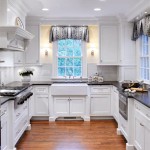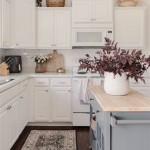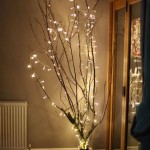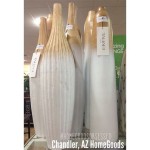How To Decorate Rustic Style Houses
Rustic style, a design aesthetic that embraces natural materials, raw textures, and a sense of unpretentious comfort, has gained significant popularity in recent years. It provides a counterpoint to the sleek, minimalist designs that often dominate contemporary interiors, offering warmth, character, and a connection to the outdoors. Decorating a house in the rustic style requires careful consideration of various elements, from the selection of building materials and furniture to the incorporation of accessories and color palettes. The goal is to create a space that feels authentic, inviting, and reflective of a simpler, more grounded way of life.
The core principles of rustic design revolve around highlighting the inherent beauty of natural elements. This means prioritizing materials such as wood, stone, metal, and natural fibers. Imperfections and irregularities are not only accepted but celebrated, as they contribute to the unique character and charm of the style. The focus is on creating a sense of history and authenticity, as if the space has evolved organically over time.
Key Materials and Textures in Rustic Design
Wood is arguably the most important element in rustic decor. It is used extensively for flooring, walls, furniture, and decorative accents. Reclaimed wood, with its weathered appearance and visible grain, is highly prized for its inherent character and sustainability. Exposed beams, wooden paneling, and log walls are all common features in rustic interiors. The wood should ideally be left in its natural state, with minimal staining or finishing, to preserve its raw texture and organic feel.
Stone is another crucial material that contributes to the rustic aesthetic. It can be used for fireplaces, walls, flooring, and outdoor landscaping. Natural stone, such as river rock, flagstone, and fieldstone, provides a textural contrast to the warmth of wood. The rough, irregular surfaces of stone add visual interest and a sense of permanence to the space. Like wood, stone should be used in its natural form, with minimal alterations or polishing.
Metal, particularly wrought iron and aged bronze, is often incorporated into rustic design to add a touch of industrial edge and visual contrast. Metal can be used for lighting fixtures, furniture hardware, and decorative accents. The weathered and patinated appearance of aged metal complements the organic feel of wood and stone. The incorporation of metal elements can also create a sense of balance and sophistication within the rustic setting.
Natural fibers, such as linen, cotton, wool, and jute, are essential for creating a comfortable and inviting atmosphere. These materials are used for upholstery, curtains, rugs, and bedding. Their soft textures and earthy tones complement the raw textures of wood and stone. Natural fibers also contribute to the overall sense of warmth and authenticity that is characteristic of rustic design. Avoid synthetic materials that may appear too polished or artificial; opting instead for organic textures that enhance the natural aesthetic.
Furniture Selection and Placement
Furniture in a rustic style house should be sturdy, comfortable, and made from natural materials. Solid wood furniture, with a distressed or weathered finish, is a common choice. Upholstered pieces should be covered in natural fabrics, such as linen or leather. Avoid furniture with overly ornate details or sleek, modern designs. The focus should be on pieces that are functional, durable, and aesthetically consistent with the overall rustic theme.
Consider the scale of the furniture in relation to the size of the room. Overly large pieces can overwhelm a small space, while undersized pieces may feel insignificant in a large room. Aim for a balance that creates a sense of proportion and harmony. The arrangement of furniture should be functional and conducive to conversation and relaxation. Create comfortable seating areas with ample space for movement. Avoid clutter and aim for a clean, uncluttered look that emphasizes the natural beauty of the space.
Antique or vintage furniture can add character and historical depth to a rustic interior. Consider incorporating pieces that have a story to tell, such as an old wooden trunk, a vintage rocking chair, or a reclaimed farmhouse table. These items can serve as focal points in the room and add a sense of authenticity to the space. When incorporating antique or vintage furniture, be sure to consider its condition and make any necessary repairs or restorations to ensure its functionality and safety.
Reclaimed furniture, made from repurposed materials, is another excellent option for rustic design. These pieces often have a unique character and a story to tell, adding visual interest and a sense of sustainability to the space. Reclaimed furniture can be made from old barn wood, industrial pallets, or other salvaged materials. Ensure that the reclaimed furniture is structurally sound and properly finished to prevent splinters or other hazards.
Color Palettes and Decorative Accents
The color palette in a rustic style house should be inspired by nature. Earthy tones, such as browns, greens, grays, and creams, are common choices. These colors create a warm, inviting atmosphere and complement the natural materials used throughout the space. Accent colors, such as reds, oranges, and yellows, can be used sparingly to add pops of color and visual interest. Avoid overly bright or saturated colors, as they may clash with the overall rustic aesthetic.
Decorative accents play an important role in completing the rustic look. Natural elements, such as dried flowers, pine cones, and antlers, can be used to add texture and visual interest to the space. Woven baskets, pottery, and other handcrafted items contribute to the overall sense of authenticity and charm. Avoid overly polished or manufactured items, opting instead for pieces that have a natural, organic feel.
Lighting is also an important consideration. Warm, ambient lighting creates a cozy and inviting atmosphere. Consider using natural light whenever possible, supplemented by soft, diffused artificial light. Lighting fixtures made from metal, wood, or glass are well-suited for rustic interiors. Avoid harsh, overhead lighting, opting instead for lamps, sconces, and chandeliers that cast a warm glow.
Textiles can also be used to add warmth and visual interest to a rustic space. Layering rugs, throws, and pillows in natural fabrics can create a comfortable and inviting atmosphere. Consider using patterns inspired by nature, such as plaids, stripes, or floral prints. Avoid overly ornate or geometric patterns, opting instead for designs that are simple, understated, and consistent with the overall rustic theme.
Wall decor in a rustic house should complement the overall aesthetic. Consider using artwork that depicts natural landscapes, wildlife, or abstract designs inspired by nature. Wooden signs, vintage maps, and old photographs can add character and historical depth to the space. Avoid overly modern or abstract artwork, opting instead for pieces that have a timeless, classic feel. Grouping artwork and other decorative items strategically will create visual interest and reinforce the rustic theme.
Fireplaces are often a focal point in rustic homes. A stone fireplace adds warmth, character, and a sense of permanence to the space. The fireplace can be decorated with natural elements, such as logs, pine cones, and candles. Consider adding a wooden mantel and hearth to complete the look. The fireplace should be functional and aesthetically consistent with the overall rustic theme.

10 Tips For Creating A Rustic Home Décor Look

48 Rustic Living Room Ideas For A Cozy Inviting Family Space

What Is Rustic Design And How Can I Use It In My Home By Modern Handcrafted Furniture

32 Best Rustic Interior Design Ideas In 2025 Decorilla

Rustic Decor What It Means And How To Get The Look Décor Aid

Rustic Decor Style Enlighting Your Mid Century Living Room Ambience

48 Rustic Living Room Ideas For A Cozy Inviting Family Space

Rustic Decor What It Means And How To Get The Look Décor Aid

Best Modern Farmhouse Decor Ideas For Every Room Of The House Decorilla Interior Design

Rustic Style Can Be Your Home Design Choice Furnizing







